Roses are red. And brown. And dead by Thursday. Technically, roses die from an air bubble—but most flowers die from bacteria. It doesn’t take long for a vase to turn into a microbial hot tub, and once that happens, your bouquet is basically on life support.

I've developed some vase habits over the past few years that helps keep flowers alive longer. Just simple things you can do to keep them alive and upright (and smelling like flowers not the carcasses of a thousand raccoons).
Here are the 5 things I do to keep cut flowers fresh longer:
Strip the stems, cut them at an angle, keep the water clean, and protect them from heat and fruit. These habits can double the life of most bouquets.
Here's how and why.
1. Strip the Stems Below the Waterline
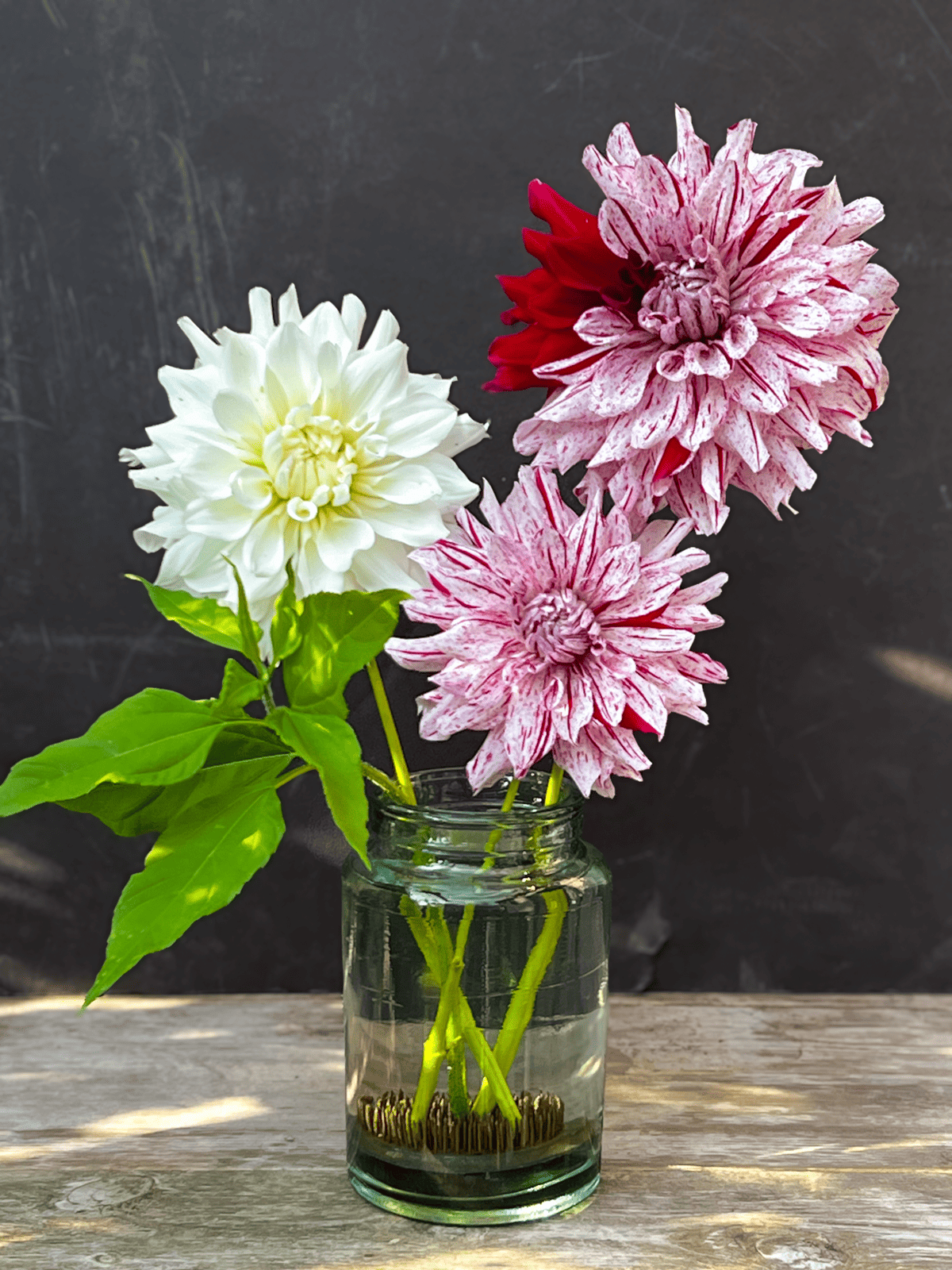
Leaves left in water become swampy. They rot fast and create a breeding ground for bacteria. That bacteria clogs up flower stems like cholesterol in an artery. Then the flower dies.
What to do:
- Remove all leaves and greenery that will sit below the water line
This one step alone can double the life of your bouquet. It's that important.
2. Trim the Stems at a 45° Angle
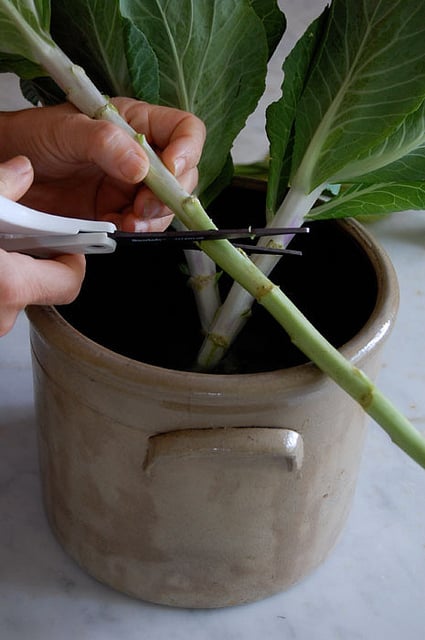
A 45 degree angled cut increases the surface area to take up water and prevents the stem from sitting flat on the bottom, which blocks water uptake.
What to do:
- Trim each stem at a sharp 45° angle.
- Use a sharp knife, shears or scissors.
- Re-trim every time you change the water.
Scientific Reason for Re-trimming:
- It clears bacteria buildup and decayed tissue from the base of the stem
- It prevents air embolisms that block water uptake
- It restores full access to the flower’s vascular system therefore extending the flower's life.
I don't know about you, but I always like to know the "why".
Tip: Fixing Droopy Roses
If your roses have the dreaded bent neck (flower head flopped over), it's probably an air bubble.
Recut the stem under water by 1–2 inches and lay it down in warm (not hot) water, submerged for 30 minutes.
🔥 Tip: Some Flowers Need Their Stems Sealed
Flowers like poppies, euphorbia, and daffodils release a milky sap when they're cut. This sap can clog their own stems and turns the water gucky.
To stop the sap, hold the freshly cut stem over a candle or lighter flame for just a few seconds—long enough to cauterize the sap ducts, but not so long that you seal the stem shut entirely.
You'll usually know a flower needs this if the stem feels sticky or leaks a white, latex-like sap when cut.
3. Add a Few Drops of Bleach (or Make Your Own Flower Food)
THIS is the bacteria killer you need. A few drops of bleach in the water.
I always add a ¼ teaspoon of bleach to an average sized vase.
As for flower food - it does actually work. It contains three things: sugar (to feed the flower), acid (to lower the water's pH), and a biocide (to kill bacteria). If you don’t have that little packet from the grocery store bouquet, use a bit of bleach the way I do.
Degrees of Care: Choose Your Level
✔️ Effort Level: Minimalist
- Add ¼ teaspoon bleach per litre of water. That's it.
🧪 Effort Level: DIY Enthusiast
- Add 1 teaspoon sugar + 2 drops of bleach to 1 litre of water. Sugar feeds the flowers, bleach kills bacteria.
🌼 Effort Level: Erin Benzakein
- Mix 1 teaspoon sugar + 1 teaspoon lemon juice (or ¼ teaspoon citric acid) + ¼ teaspoon bleach per litre. This is 'basically' commercial flower food: nutrients, acidity, and bacteria control.
All three work. I feel like I'm winning at life by just putting the bleach in my water but whatever makes you feel good, do that.
TIP: Make bleach convenient by putting some in a small jar or eyedropper bottle. I keep my small eye dropper bottle of bleach right in my sink's tip out drawer, exactly where I need it when filling a vase.
4. Change the Water – Without Destroying the Arrangement
Once the water looks cloudy it's also probably starting to stink like mouse guts. It’s time for a change.
Would you like to save this stuff?
But if you’ve got a huge vase filled with rocks or an arrangement tighter than a 1950s updo, dumping the water can feel like dismantling a bomb.
Here’s my trick: Use a rubber siphon tube. Any clean tube. I use a piece meant for a pond pump. There are 2 ways to do it:
- Stick one end in the water, suck the other end until water flows, and drain it into a bowl. (Don't drink. Obviously.)
- If the thought of choking on musty flower water makes you gag, fill the tube with water from a tap, keeping your thumb over the one end while it fills. Immediately put your thumb over the other end once filled. Stick one end in the water, and release your thumb from it. Then release your thumb from the other end.
Check out this very old video of me demonstrating the siphon trick 15 years ago (!!) on this blog.
5. Keep Flowers Away From Heat and Fruit

Bananas are the saboteurs of the flower world. Heat and sun speed up the blooming process. So keep them somewhere cool, out of direct sunlight. That makes sense.
More unexpectedly, you're going to want to keep your arrangement away from the fruit bowl and its fog of ethylene.
(Zucchini goat cheese tarts are O.K. companions though.)
What to do:
- Keep flowers in a cool spot, out of direct sunlight and away from heating vents.
- Don’t place them near bananas, apples, or other ethylene-releasing fruit. Ethylene = accelerated aging.
Applying SPF 30 to a tulip is a logistical nightmare so just keep them out of the sun. It's easier that way.
Bonus Rescue Tip: Sink the Whole Bouquet
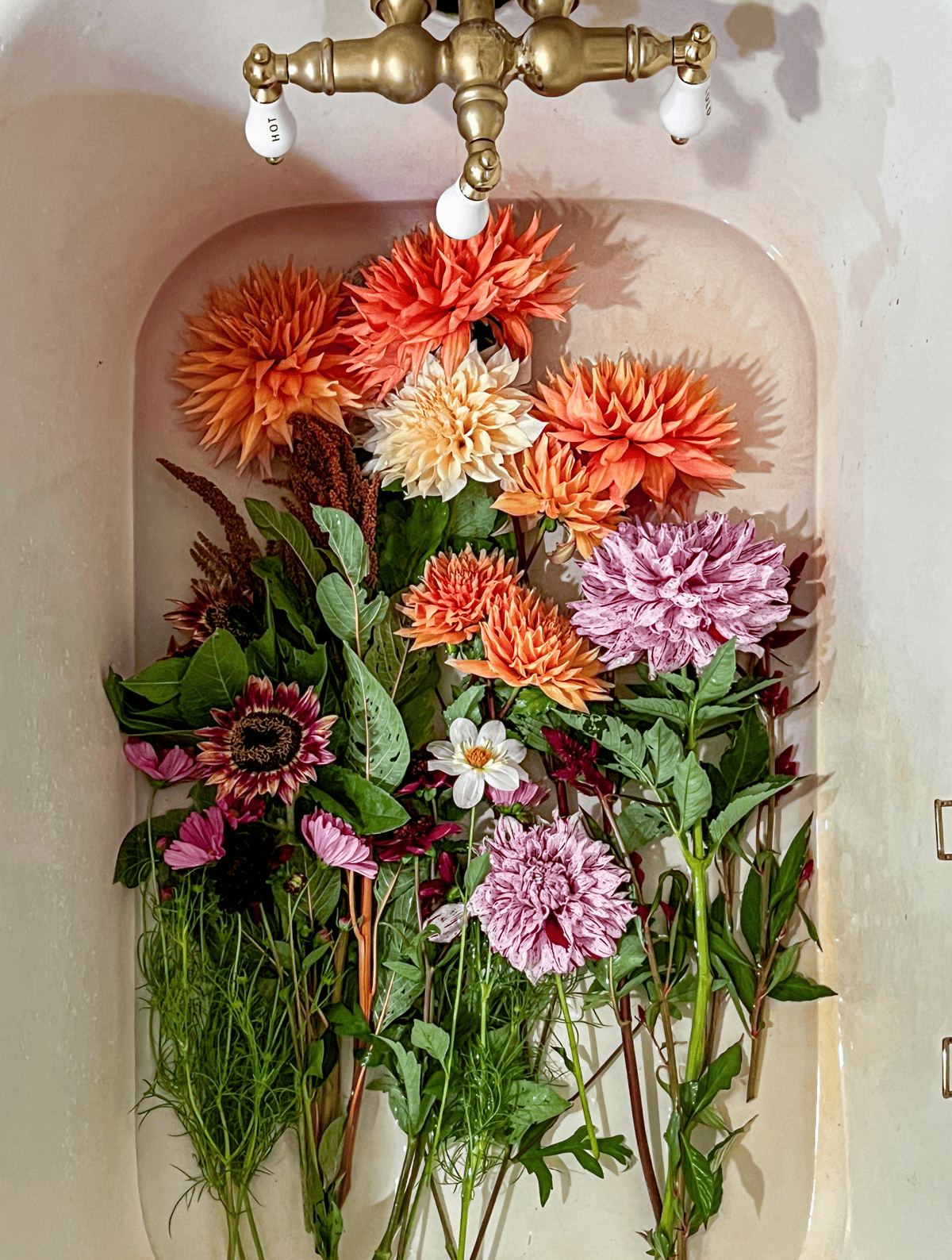
If your flowers were out of water for a few hours or are looking just a little too limp, give them a full-body revival.
What to do:
- Fill a clean sink or tub with cool water.
- Submerge the blooms —stems, leaves, and even flowers—for 30 to 60 minutes.
They LOVE this. Especially roses, tulips, and hydrangeas. Avoid doing it with fuzzy-stemmed stink-water flowers like sunflowers or gerberas.
Quick Recap: The Flower Survival Checklist 🌸
- Strip the stems below the waterline to stop rot and bacteria.
- Trim at a 45° angle (and re-trim when changing water).
- Add bleach or DIY flower food to fight bacteria and feed blooms.
- Change the water before it looks murky (use a siphon to avoid chaos).
- Keep flowers cool and away from fruit—especially bananas.
Final Thought
To keep flowers fresh you just need clean water, clean stems, and a bit of bacterial warfare.
And maybe a rubber tube.
Related posts
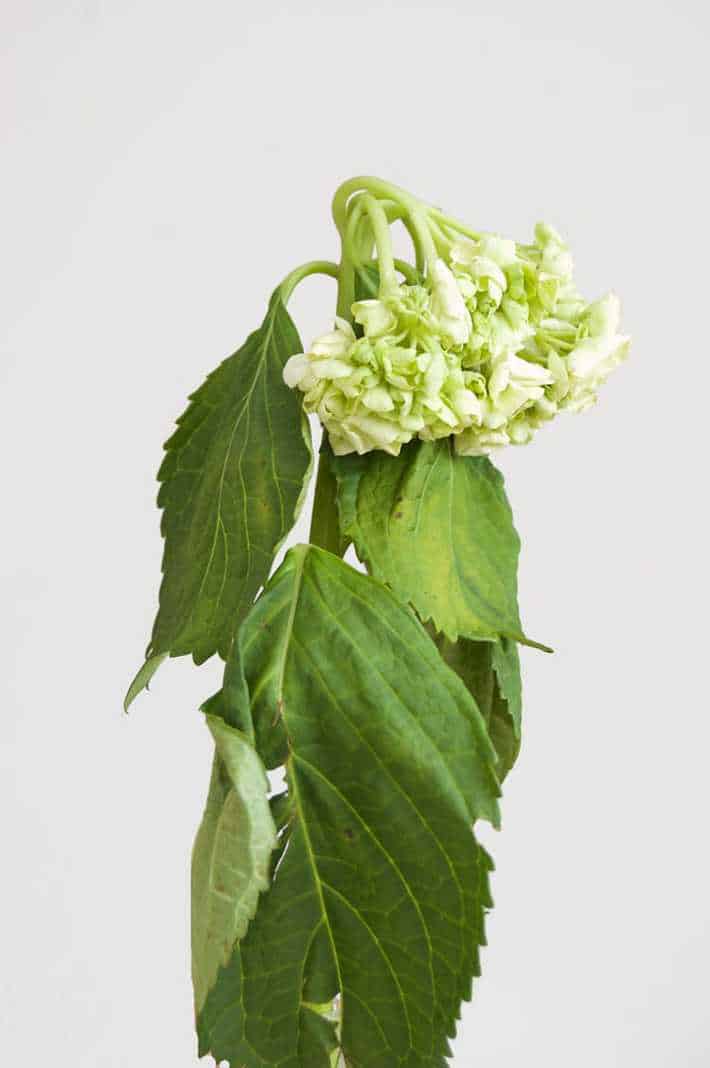
How to Revive a Wilted Hydrangea
Party planners around the globe curse it, brides demand it.
If your hydrangea wilted like this you can save the day and bring it back to life.
FAQs
Q: Can I just keep topping up the water instead of changing it?
A: Yes—but only for a couple of days. Once the water gets cloudy, change it completely.
Q: Do I really have to re-trim the stems when I change the water?
A: It helps, yes. Even submerged stems develop blockages from bacteria or air. A fresh cut reopens the drinking channels so your flowers don’t slowly dehydrate in plain sight.
Q: Which flowers are considered "dirty" and need daily water changes?
A: Flowers like sunflowers, gladiolus, dahlias, lilies, and stock release more organic material into the water, which feeds bacteria fast. If you're using these, change the water every day—or at least before it starts to smell like compost tea.




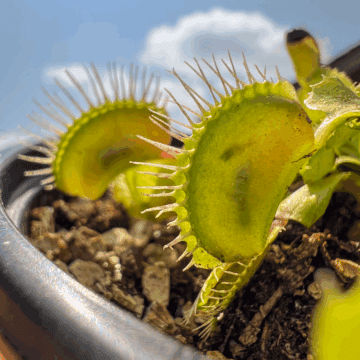
Randy P
Great tips - shared right now with my FB family and friends.
Karen
Thanks Randy! ~ karen!